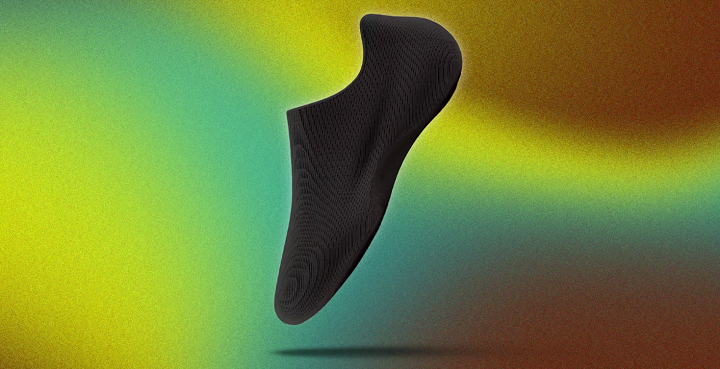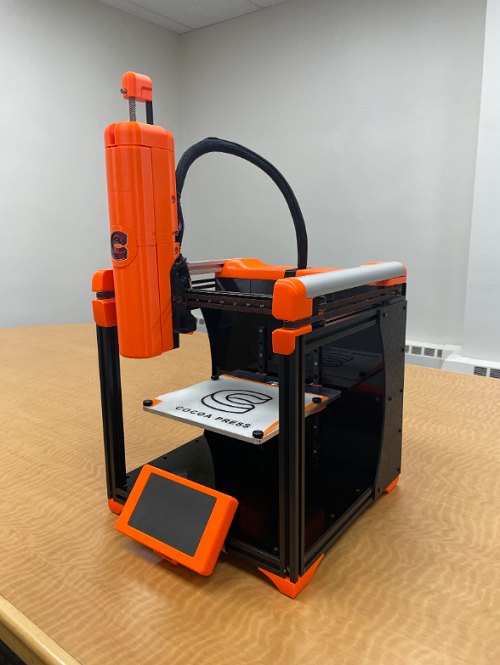We’re kicking things off in News Briefs with material news today, as Fictiv has launched ten new advanced 3D printing materials. Moving on, CLEANR is using the Formlabs Automation Ecosystem to speed development of its filtering solutions for washing machine manufacturers. Amnovis is now FDA-registered, and a team of POSTECH researchers developed a 3D printing technology that allows precise writing and patterning of biopolymers. Pangaia and Zellerfeld collaborated on a 3D printed sneaker that prioritizes sustainability. Finally, the Cocoa Press 3D printer is available for pre-order.
Fictiv Launches 10 New Advanced AM Materials
First up, California-headquartered Fictiv, an operating system for custom manufacturing, has announced the launch of ten new advanced 3D printing materials. The company works to help its customers make sourcing for custom parts easier, and with the addition of these new materials to its online self-service quoting platform, they can enable faster ordering and address more advanced prototyping needs. Parts made with these new materials can be delivered as fast as 24 hours, and they can all be instantly quoted for lead time and pricing.
The ten new materials work for a variety of applications in a variety of industries, including automotive, consumer products, medical, and industrial. Duraform Nylon 12 Glass-Filled is the only new SLS 3D printing material, while Nylon 11 and Polypropylene are new for MultiJet Fusion printing. There are three new materials for SLA 3D printing: Accura 60, Accura Xtreme White 200, and Accura Xtreme Grey. Finally, ABS ESD, ASA, PC+ABS, and Polycarbonate are all new for FDM printing.
CLEANR Using Formlabs’ Automation Ecosystem for Microplastic-Filtering Technology
 David Dillman, Chip Miller and Max Pennington are taking advantage of the Sears think(box) at Case Western Reserve University to design a microplastics filter for washing machines. Credit: Peter Krouse, cleveland.com
David Dillman, Chip Miller and Max Pennington are taking advantage of the Sears think(box) at Case Western Reserve University to design a microplastics filter for washing machines. Credit: Peter Krouse, cleveland.comMicroplastics cover nearly 90% of the ocean’s surface, and washing machine wastewater is the largest source of this pollution in the world, leading to many new regulations. CLEANR, a startup out of Case Western Reserve University, has created a market-disruptive microplastic-filtration technology for washing machines, and is using its early adopter access to the Formlabs Automation Ecosystem in order to speed up the development of its solutions. The platform’s highly scalable, automated workflow is able to manufacture back-to-back prints, with little human intervention, 24/7, which enables much higher levels of productivity. This will help CLEANR introduce its solutions, and collaborate with appliance manufacturers, much faster and more efficiently.
“3D printing technology plays a pivotal role in how we’re helping washing machine manufacturers address complex microplastic-filtering specifications, testing standards, space constraints, and cost challenges as they move quickly to address new regulations. Formlabs technology enables us to render extremely high-quality prototypes for them in a matter of hours or days, instead of weeks or months, in order to adapt our solution for diverse appliance designs,” explained Chip Miller, CLEANR Co-Founder and COO.
Amnovis Now FDA Registered to Print Titanium Implants
 Ti-6Al-4V Grade 23 spinal interbody fusion cages
Ti-6Al-4V Grade 23 spinal interbody fusion cagesIndependent additive manufacturing production and engineering company Amnovis, founded in June of 2020, works to enable “thoughtful innovations” for use in regulated, high-tech industries, such as medical. The company just announced that it is now FDA-registered to print high-quality titanium implants for customers around the globe from its ISO 13485 certified facility in Aarschot, Belgium. Amnovis claims that its founders were some of the first to 3D print titanium medical devices like spinal and orthopedic implants, and is continuing to use its expertise to advance potential applications for titanium 3D printing. The company will surely get a lot further in this endeavor now that it has been FDA-registered.
“Built on decades of experience in titanium 3D printing, our team is able to print patient-specific implants and do volume manufacturing of standard components in Ti Grade 1 or Ti-6Al-4V Grade 23,” the company wrote in a LinkedIn post.
POSTECH Develops Novel 3D Bioprinting Strategy for Biopolymers
 3D nanopatterns of biopolymers. The new printing technology allows for precise construction of 3D patterns using various biopolymers such as nucleic acids, polysaccharides, and proteins in the form of pillar and arch-shaped nanowires. Credit: POSTECH
3D nanopatterns of biopolymers. The new printing technology allows for precise construction of 3D patterns using various biopolymers such as nucleic acids, polysaccharides, and proteins in the form of pillar and arch-shaped nanowires. Credit: POSTECHMany biopolymers, like proteins, nucleic acids, and polysaccharides, can’t be easily constructed into high-resolution 3D shapes at the nano- or submicron-scale because of their structural and rheological properties. But a research team from Pohang University of Science and Technology (POSTECH) published a study detailing their new 3D bioprinting technology, which directly allows precise patterning and writing of biopolymers with functional integrity and full mechanical stability. Regardless of the type of biopolymer, their method can create 3D biopolymeric architectures with submicron-resolution geometry and controlled size, and the materials can exhibit their own desired functions. This novel strategy sequentially confines, evaporates, and then solidifies a biopolymer-containing solution, which actually preserves a biopolymer’s folding structure and molecular function. The technique will likely have applications in developing materials that are able to analyze and mimic microscale biological tissues, as well as manufacturing artificial tissues and cells that can properly function in a biological environment.
“It holds the potential to expand to the printing of various materials with diverse optical and electrical properties, including complex materials such as quantum dots and carbon nanotubes,” POSTECH Professor Emeritus Jung Ho Je said about their work.
Low-Key 3D Printed Sneakers from Zellerfeld and Pangaia
Sneaker manufacturing, according to eco-consultancy Quantis, accounts for 1.4% of global greenhouse gas emissions, which has led many of the biggest sportswear brands to figure out more sustainable ways to make footwear. Now, on its journey to help save the environment, Pangaia has announced the next generation of 3D printed sneakers: the Absolute Sneaker. The brand partnered with Zellerfeld, no stranger to 3D printed shoes, to create this new trainer, which is ‘made to be remade.’ The shoe is 3D printed out of thermoplastic polyurethane (TPU), and can be melted down multiple times, which gets rid of excess inventory that would end up in the landfill or just sitting in a warehouse. The Absolute Sneaker, available for purchase now, comes in two colorways, and costs about £200. If you plan on sending your sneakers back for recycling, you’ll automatically get a £25 voucher for other Pangaia products.
“As we launch our partnership with Pangaia, I couldn’t be more thrilled to see major brands embracing the 3D printing revolution,” said Zellerfeld CEO and Co-Founder Cornelius Schmitt. “With the Absolute sneaker, Pangaia has created a shoe that not only prioritises sustainability, but is also the lightest and quickest to print, setting a new standard for what’s possible in printed footwear. Our hope is that this partnership inspires others to join the mission towards a circular future and to recognise the potential that 3D printing holds in revolutionising the way we create products.”
Cocoa Press Chocolate 3D Printer Available for Pre-Order
Fancy a chocolate 3D printed Benchy Boat? You’re in luck, because the Cocoa Press chocolate 3D printer is now available for pre-order! The Cocoa Press controls the thickness and position of layers with G-code, but rather than printing filaments or resins, this FDM 3D printer builds layers of delicious chocolate using a 0.8 mm nozzle, which allows it to lay down material at a faster rate of speed. Ellie Rose Weinstein, the creator of the Cocoa Press, has been working on the printer since 2014, and it’s been through six iterations over the years to get to its current 140 x 150 x 150 mm build volume.
Recipes for milk and dark chocolate were specially formulated to work with the Cocoa Press, though creative users can create their own. The “filament” comes in 70 g cylinders, with no air bubbles. These chocolate cores are heated to just above body temperature, before being extruded onto the build plate to print a variety of infill patterns to produce different textures. There are designs available on Printables, or you can make your own. With a $100 deposit, Cocoa Press is available as a DIY kit for $1,499, or a professional package starting at $3,995; kits will ship in late 2023, while the professional systems will ship in early 2024.
Subscribe to Our Email Newsletter
Stay up-to-date on all the latest news from the 3D printing industry and receive information and offers from third party vendors.
You May Also Like
High Stakes, High Speed: KVG Acquires 15 Nexa3D HSE 3D Printers to Boost Military Tech
As 3D printing increasingly intersects with defense and military logistics, a new partnership between Nexa3D and mission support logistics firm KVG stresses the growing importance of this technology in strategic...
3D Printer Maker EVO-tech Reborn as NEVO3D — Once More With Feeling
EVO-tech was a 3D printing service and original equipment manufacturer established in 2013 and based in Schörfling am Attersee, Austria. The company produced high-quality material extrusion systems featuring linear bearings,...
3D Printing News Briefs, March 16, 2024: Partnerships, Affordable Bioprinter, & More
We’re starting with dental 3D printing news today, and then moving on to some new partnerships. Then it’s on to some interesting university research about 3D printing plant-based pharmaceuticals, but...
FDR vs. SLA: The Right Polymer Manufacturing Choice for Your Application
The additive manufacturing (AM) industry has no shortage of acronyms when it comes to the various methodologies of industrial 3D printing. In polymer 3D printing, there are three main methods...


































